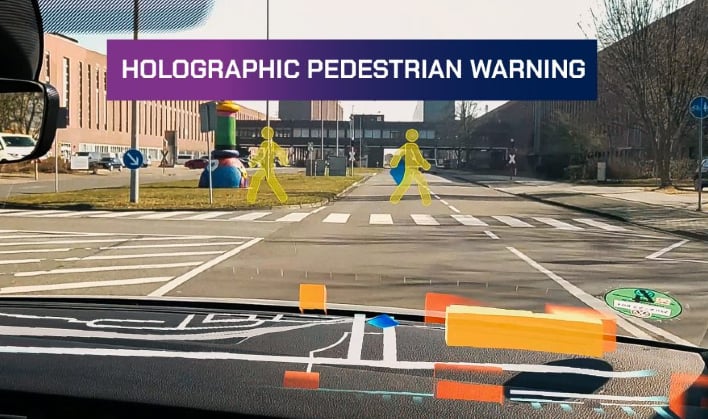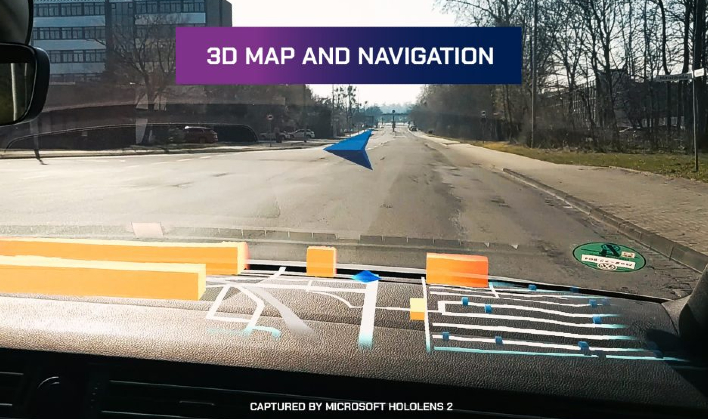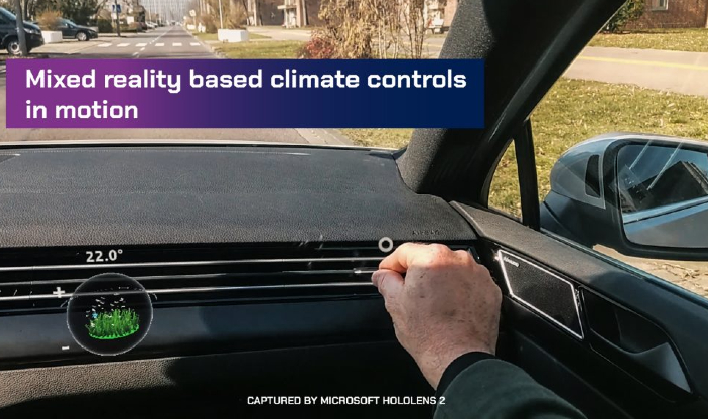Microsoft And Volkswagen Test A Moving Platform Mode For Drivers Wearing A HoloLens Headset

The joint project was announced via a blog post on Microsoft's website yesterday. The new "moving platform" mode for Hololens 2 is said to overcome major limitations of mixed reality headsets and enables the AR headset to be utilized in new and creative ways. Microsoft says that while Volkswagen is the focus for the mobility side of things, the device's capability could be shared with other industries in the future.
"We think mixed reality information is the most intuitive information we could provide to enhance our customers' user experience," stated Dr. Andro Kleen, head of the data science team at Volkswagen Group Innovation. "Because what you see there, and what you need to process, is very close to what humans normally see and process. It's not so abstract."
Microsoft debuted the Moving Platform Mode in Windows Holographic 21H2. At that time, officials explained that after enabling Moving Platform Mode, customers would be able to use Hololens 2 in "previously inaccessible environments like large ships and large marine vessels," which were designated "low dynamic motion moving platforms."

But Volkswagen was thinking about how to implement the technology before its heads-up display. Kleen said that in 2015 the company was researching how to use self-piloted vehicles and augmented reality to teach driving on a racing circuit. Similar to the heads-up display it now has in some of its vehicles, the Race Trainer system used a heads-up display to superimpose lines of arrows on the track for the drivers to follow, and provided steering and braking-cues to guide them through a gradated set of lessons. Is anyone else feeling the urge to play some Forza Motorsport?
The Moving Platform technology was being developed during the height of the pandemic, which presented a few challenges. Joshua Elsdon, a Microsoft senior software engineer who worked on the project, said, "We had to do a lot of testing in my apartment. These aren't ideal development conditions. All of this stuff was done remotely and distributed across different countries, which was interesting."

The latest partnership between Microsoft and Volkswagen could be an attempt to keep the Hololens project meaningful and viable. The Hololens technology has not had the best path to success. In early 2022, the Hololens 3 was canceled presumably due to the fact no one seemed to know what the purpose of the headset was any longer. It saw 3 key team members leave for Meta as well. Microsoft did say that the Hololens project was far from dead shortly after, however.
This could be Microsoft's last attempt at finding a home for Hololens and all it has to offer. While it seems to exclude the mainstream audience that other AR/VR headsets seem to cater to, that may not be a bad thing. Perhaps the Hololens team has finally found the purpose they were missing not too long ago.
Top Image Courtesy of Microsoft/Hololens 2

